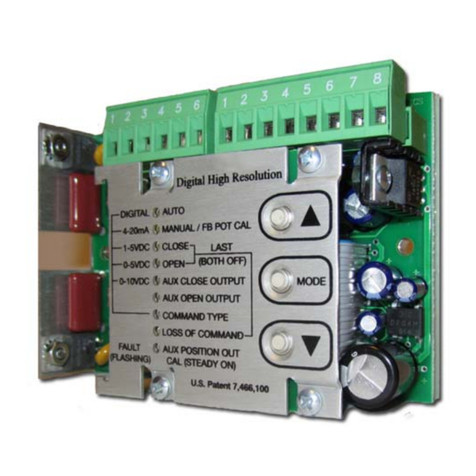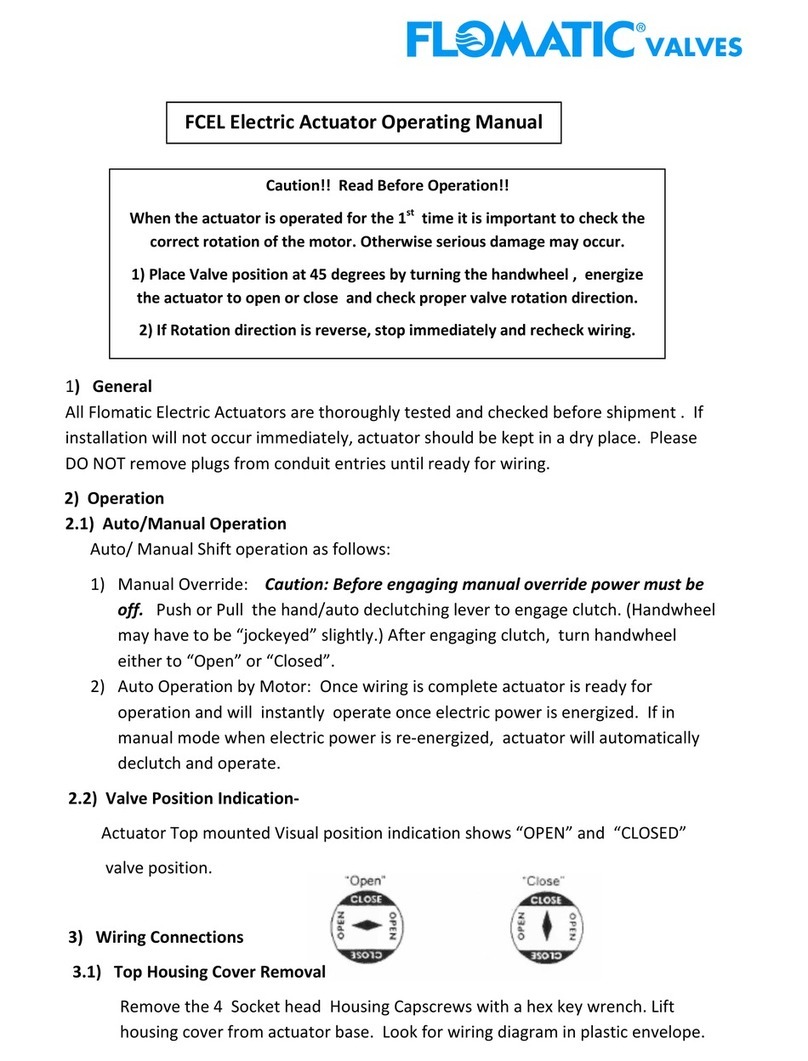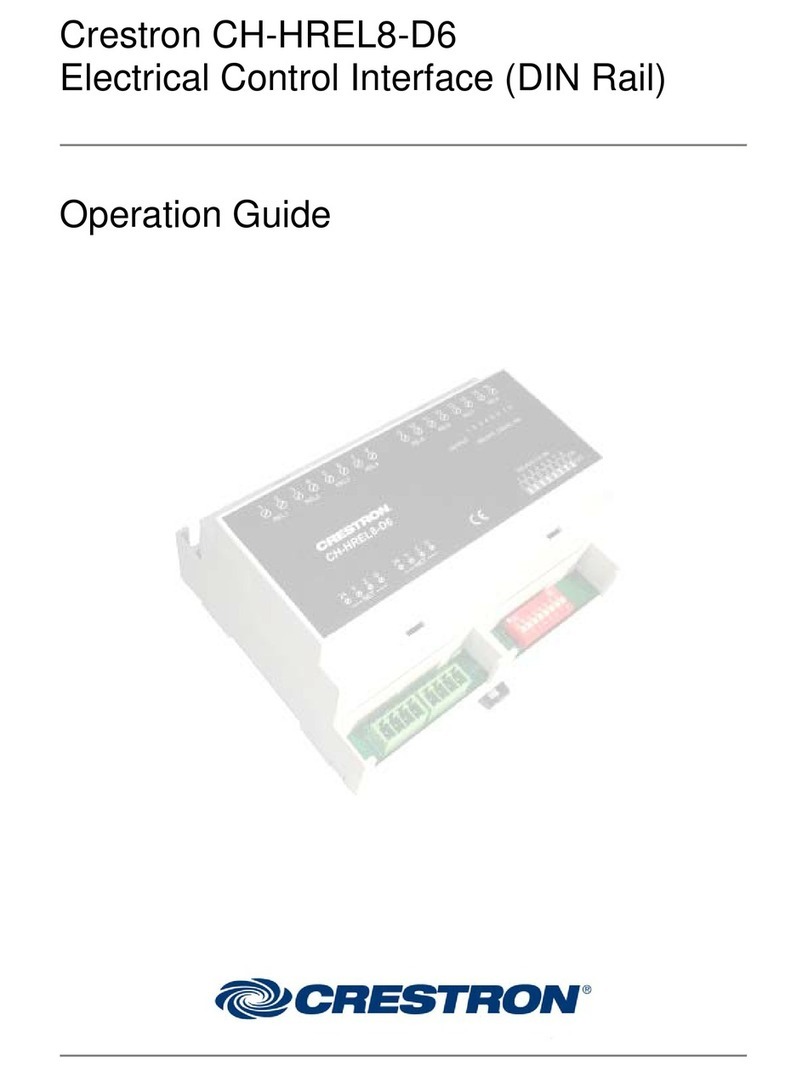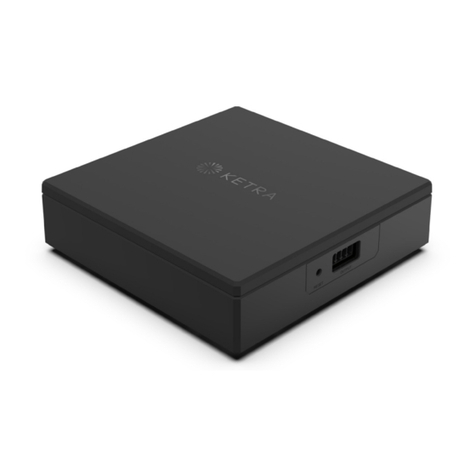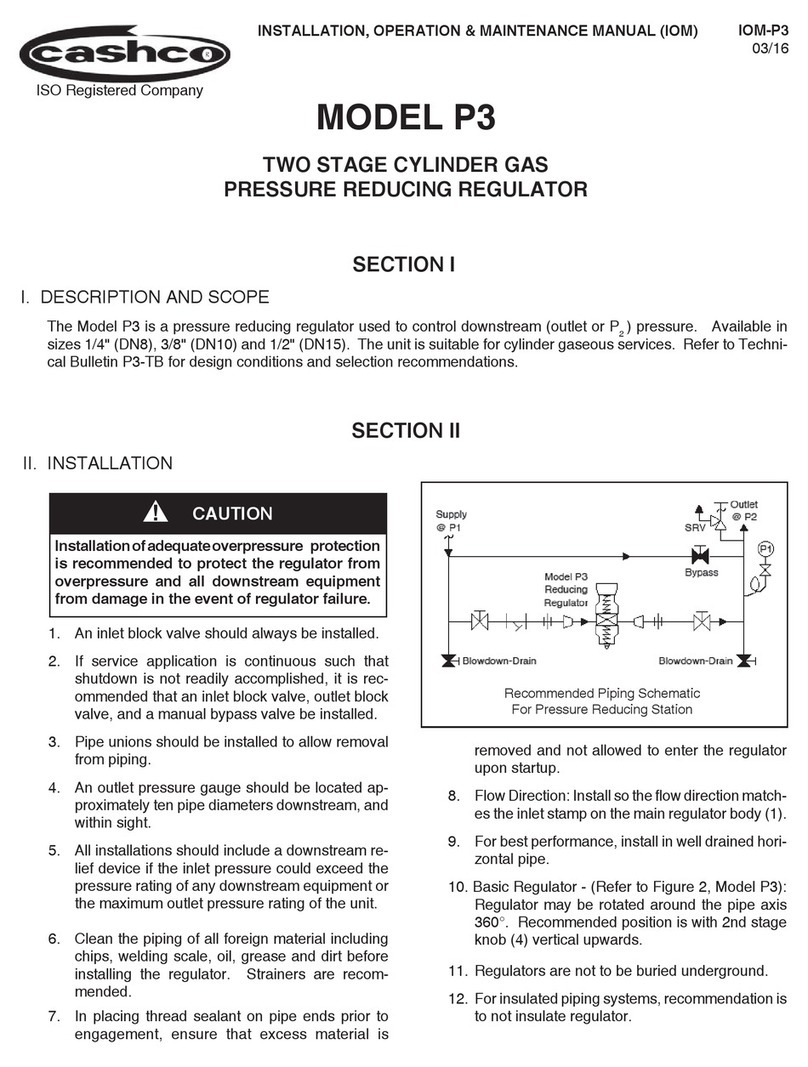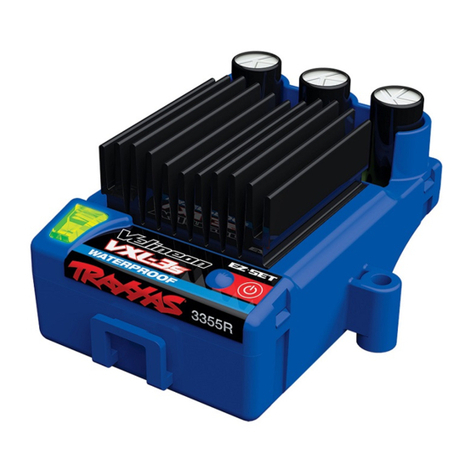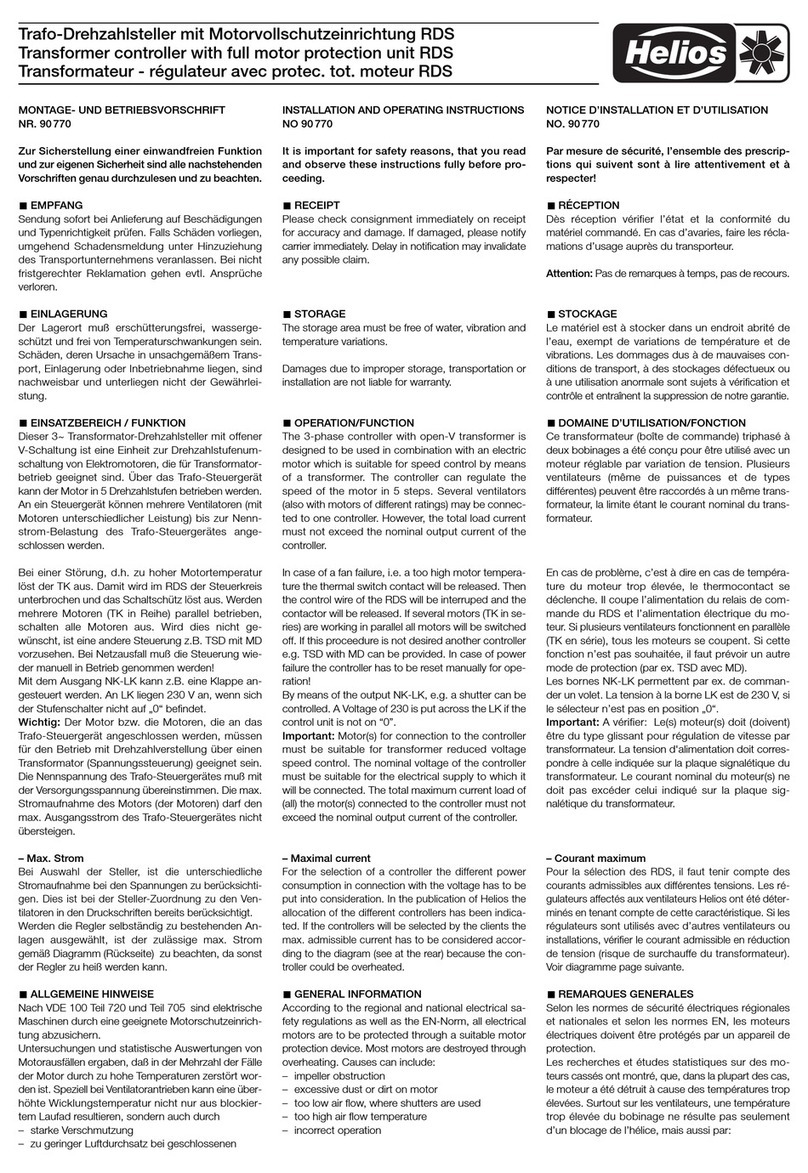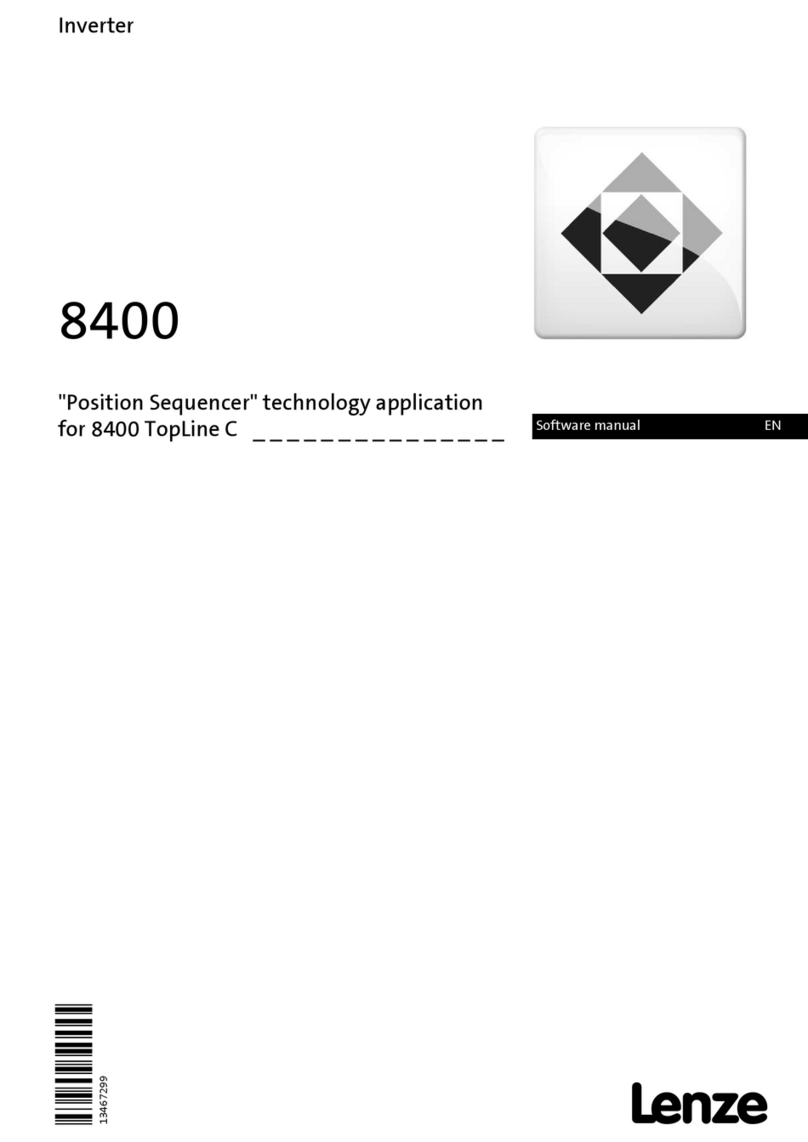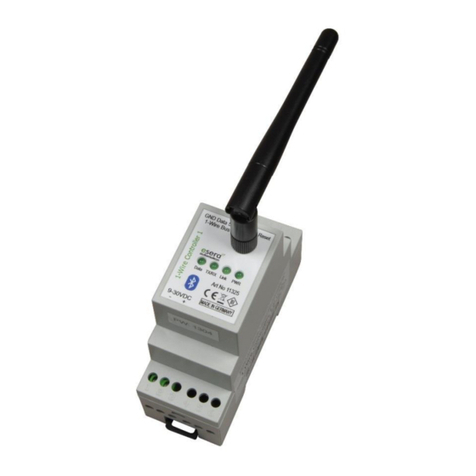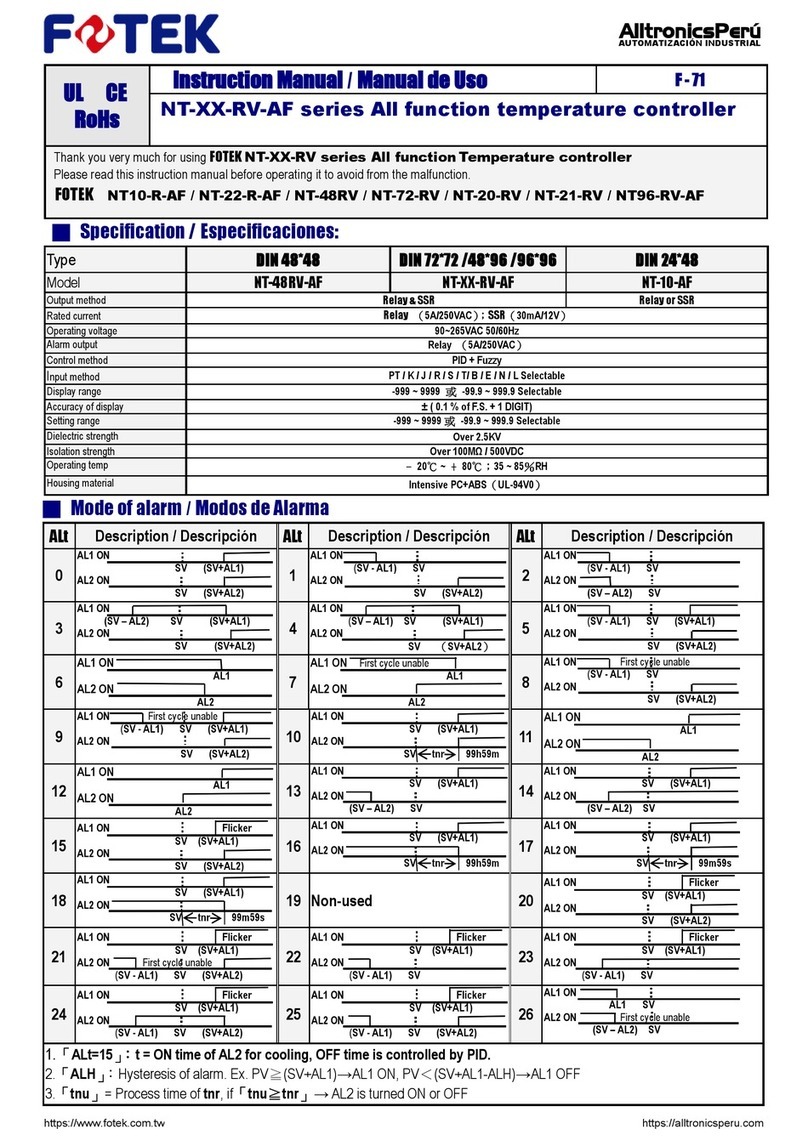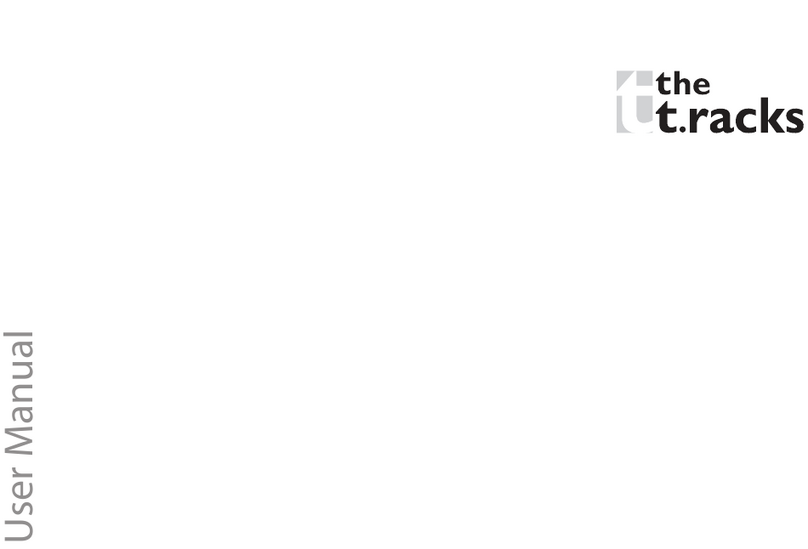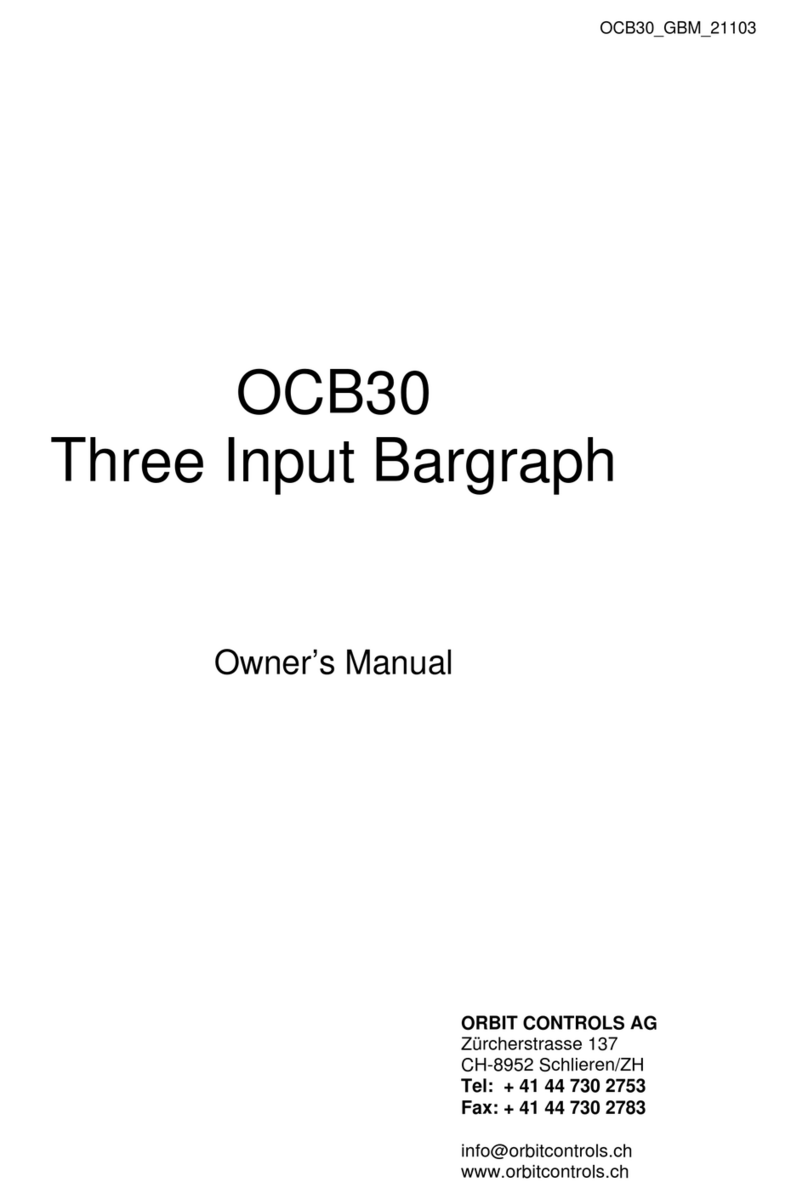Flomatic Smart Card FDHC-100C User manual

Flomatic Smart Card
TM
Model FDHC-100 (Digital High-Resolution Controller)
Configuration and Operation Manual
FDHC-100 Configuration & Operation Man. Rev 0
August 16, 2010
1 of 14
Flomatic Corporation
Glens Falls, NY 12801
Phone (518) 761-9797
Fax (518) 761-9798
The Flomatic FDHC-100 is a high performance
Digital positioner intended to control AC actuators,
providing 450 points of resolution with quarter turn
actuators ranging from 2 sec to 120 sec and rated for
25% duty or more. The FDHC-100 has many automatic
advanced features that will enhance any actuator while
making it easy to install and set up.
The simple three button control is used to configure all
parameters the unit needs for a wide variety of
applications, and allows the
open
and
closed
positions
to be easily set for direct or reversing acting without
any rewiring. The unit can be configured for various
command types (4-20mA, 1-5V, 0-5V, 0-10V, or a
digital command) and its default operation upon loss of
command.
Various option modules are easily plugged into the unit,
providing other features such as a position feedback
signal (current or voltage), auxiliary switches, fault relay
contact, or digital communications. A wide range of data is accessible through a digital communications
module, providing additional control or information.
The unit is of single solid construction and is easily mounted with two screws. The FDHC-100 is
interchangeable with the AMC and LRC standard size controllers, and can be used to upgrade
performance for those applications.
FEATURES
•Positions to ±0.1° with quarter-turn actuators ranging from 2 sec to 120 sec (with or without a
brake).
•Adaptive Control feature continuously adjusts for load and actuator conditions and eliminates
calibration procedures and auto-cal operations.
•Three button control provides easy setup and eliminates the need for instrumentation.
•Polarity Detection feature allows direct or reverse acting operation without re-wiring.
•Electronic Brake feature can eliminate need for a mechanical brake in many applications, and
extends mechanical brake life when used.
•Stall Detection feature protects actuator motor from a stall condition.
•Automatic Duty Cycle Control feature prevents shutdown of a process due to a thermal overload of
the actuator motor, and allows actuators rated for 25% duty or more to be safely used.
•Operating temperature range of 0 to 60°C
FDHC-100 / FDHC-100C 117VAC (CE ready)
FDHC-100A / FDHC-100D 234VAC
FDHC-100B /FDHC-100D 24VAC (CE ready)

Flomatic Smart Card
TM
Model FDHC-100 (Digital High-Resolution Controller)
Configuration and Operation Manual
FDHC-100 Configuration & Operation Man. Rev 0
August 16, 2010
2 of 14
Flomatic Corporation
Glens Falls, NY 12801
Phone (518) 761-9797
Fax (518) 761-9798
Di
g
ital Hi
g
h Resolution
OUTLINE
FDHC-100 / FDHC-100C 117VAC (CE ready)
FDHC-100A / FDHC-100D 234VAC
FDHC-100B / FDHC-100E 24VAC (CE ready)

Flomatic Smart Card
TM
Model FDHC-100 (Digital High-Resolution Controller)
Configuration and Operation Manual
FDHC-100 Configuration & Operation Man. Rev 0
August 16, 2010
3 of 14
Flomatic Corporation
Glens Falls, NY 12801
Phone (518) 761-9797
Fax (518) 761-9798
FDHC-100
BLOCK DIAGRAM
DESCRIPTION
The FDHC-100 is rated for motors with up to 5A running currents and comes in three versions to
accommodate different voltage applications. The FDHC-100 and FDHC-100C are rated for 117 VAC
±10%; the FDHC-100A and FDHC-100D are rated for 234 VAC ±10%, and the FDHC-100B and FDHC-
100E are rated for 24 VAC ±10%. The unit is easily mounted with 2 screws and is equipped with
removable screw terminals that provide for easy field wiring. The unit’s size, mounting, and screw
terminals are compatible with the AMC-100, AMC-101 and LRC-101 series controllers - the FDHC-100 can
be used as a direct replacement for those units in nearly any application.

Flomatic Smart Card
TM
Model FDHC-100 (Digital High-Resolution Controller)
Configuration and Operation Manual
FDHC-100 Configuration & Operation Man. Rev 0
August 16, 2010
4 of 14
Flomatic Corporation
Glens Falls, NY 12801
Phone (518) 761-9797
Fax (518) 761-9798
The simple three button MODE control (▲)and (▼)allows the user to perform a complete set-up
from the unit itself without the need for any instrumentation. The adaptive control feature of the
FDHC-100 eliminates the need for any calibration steps. In the simplest application, only the closed
and open positions need to be set and the unit automatically and continuously sets all other
parameters when placed in the AUTO mode.
CAUTION! These units are intended to be mounted in an appropriate enclosure to avoid electrical
shocks and exposure to electrostatic charges. High voltages are present on the outside of the unit when
power is applied. AC power should be disconnected and antistatic measures should be taken prior to any
wiring of these units. A heater and thermostat should be used where condensation may occur.
POWER / SIGNAL (J2)
Power is connected to pins 1, 2, and 3 as shown in the block diagram. The fuse installed on the unit is
rated for maximum output current that can be safely delivered by the AC outputs. Replacement fuses
must not exceed the maximum rating to prevent damage to the unit. Smaller fuse sizes can be used
with smaller motors – consult the actuator manufacturer for appropriate fuse size and type. An
appropriate command signal, either 0-5V, 0-10V, 1-5V, or 4-20mA, should be connected to pin 5 or 6
(As shown in the Block Diagram) while using pin 4 as the return
signal ground
. The FDHC-100 must be
configured for the type of command signal that is to be used (see COMMAND TYPE). Pin 7 of J2
provides an auxiliary +5V output which can be used to connect a command potentiometer. By
connecting one end of a potentiometer to pin 7, the other end to pin 4, and the wiper to pin 6, a local
control knob can be implemented. Pin 8 provides an auxiliary +15VDC output which can be used to
power an input or output 4-20mA transmitter.
ACTUATOR (J1)
The actuator motor and feedback potentiometer are connected to J1 as shown in the Block Diagram. The
Motor Neutral wire must be connected to pin 2, while one motor winding is connected to pin 1 and the
other winding to pin 3. The feedback potentiometer wiper must be connected to pin 5, while one end is
connected to pin 4 and the other end to pin 6. The Polarity Detection feature of the FDHC-100
automatically determines which motor winding to control based on where the
open
and
closed
positions
are set; this feature also eliminates the need to rewire the unit for direct or reverse acting applications.
When the (▲) and (▼)buttons are used to control the actuator, the (▲) button will turn on the motor
winding connected to pin 1, while the (▼) button will turn on the motor winding connected to pin 3. See
MANUAL/FB POT CAL for more details.
OVERRIDE (J7)
J7 provides a simple 2-wire connection that can override the FDHC-100 to perform a variety of external
control functions. Using an appropriate interface module, commonly used auto/manual station switches
are easily implemented with low voltage/low current switches. See Special Applications for more details.
The factory installed jumper between pins 1 and 2 enables normal opera operation of the FDHC-100 and
must be installed if the external override functions are not used.
MODE
The MODE button is used to select the desired function of operation. When the MODE button is pressed,
the unit will switch to the next function and the appropriate LED indicator will turn on to let the user
know which function is selected. Except for the MANUAL/FB POT CAL mode, the associated mode

Flomatic Smart Card
TM
Model FDHC-100 (Digital High-Resolution Controller)
Configuration and Operation Manual
FDHC-100 Configuration & Operation Man. Rev 0
August 16, 2010
5 of 14
Flomatic Corporation
Glens Falls, NY 12801
Phone (518) 761-9797
Fax (518) 761-9798
indicator will be steady on; for some of the modes other indicators will flash to indicate specific settings
associated with the mode. Each of the modes is described in more detail in the following sections. If a
0-5V or 0-10V command signal is used, the LOSS OF COMMAND function cannot be used. The MODE
button will skip over the LOSS OF COMMAND mode when the unit is configured for a 0-5V or 0-10V
command signal (see COMMAND TYPE). When the OVERRIDE mode is enabled (see OVERRIDE MODE),
the MODE button is disabled and the Manual/Pot Cal indicator will turn on steady.
ADJUST UP (▲)and ADJUST DOWN (▼)
The adjust up (▲)and adjust down (▼)buttons are used to adjust the setting of any given function.
When a function is selected by the MODE button, the adjust buttons will affect that function only. Note,
that the AUTO mode does not have any adjustable settings, and therefore, the adjust up (▲)and adjust
down (▼)buttons have no effect. Also, the adjust buttons are disabled in the OVERRIDE mode.
OVERRIDE MODE
The OVERRIDE mode is not selected by the MODE button and can be enabled at anytime by connecting
a resistance greater than 250 ohms to the Override Input (J7 pin 1 and pin 2). While the OVERRIDE
mode is enabled, the MODE button and adjust buttons are disabled, and the Manual/Pot Cal indicator will
turn on steady to indicate that the unit is being controlled by the Override Input. Shorting J7 pin 1 to pin
2 returns the unit to normal operation and the previously selected mode. Note that earlier models may
not have connector J7, and therefore do not have the OVERRIDE mode feature. Controlling the FDHC-
100 from the Override Input is accomplished by connecting a specific resistance to select a specific
operation. The table below defines the operations and their associated resistance. See Special
Applications for details on using the Override Input for an Auto/Manual Station.
RESISTANCE OPERATION
> 4.3K ohms OFF
3.3K ohms ±5% LATCH
2K ohms ±5% OPEN
1.2K ohms ±5% CLOSE
510 ohms ±5% STOP
The OPEN function will operate the motor in the
open
direction as set by the OPEN mode, while the
CLOSE function operates the motor in the
closed
direction as set by the CLOSE mode. The LATCH
function will maintain the previously selected function; this allows momentary switches to be used for the
OPEN and CLOSE functions. The OFF and STOP functions turn the motor off, which also unlatches the
OPEN or CLOSE functions.
Note that the OPEN and CLOSE functions may work in reverse until the
open
and
closed
positions are set
by the OPEN and CLOSE modes. The FDHC-100 will automatically turn the motor off when the
open
or
closed
positions are reached. However, if a feedback fault occurs (see FAULT INDICATOR), the motor
will be turned on for a period of 15 minutes in the selected direction. For this reason, limit switches
should be used when using the OVERRIDE mode, and should be set to a position acceptable for the
application. The 15 minute period can also be terminated using the OFF or STOP function.

Flomatic Smart Card
TM
Model FDHC-100 (Digital High-Resolution Controller)
Configuration and Operation Manual
FDHC-100 Configuration & Operation Man. Rev 0
August 16, 2010
6 of 14
Flomatic Corporation
Glens Falls, NY 12801
Phone (518) 761-9797
Fax (518) 761-9798
The motor is also automatically turned off if the FDHC-100 detects a stall (see STALL DETECTION). An
OPEN or CLOSE operation can be attempted again after switching to the OFF, LATCH, or STOP functions
first.
AUTO
The AUTO function is the normal mode of operation for the FDHC-100; all the other functions are used to
set up the unit. While in AUTO, the unit can be controlled by various external signals, some of which can
be selected by the COMMAND INPUT function. When the unit is not in the AUTO mode, all external
controls described below will be disabled.
Once the
open
and
closed
positions have been set, the AUTO mode will control the position of the
actuator according to the command input signal. For an input signal of 0V (for 0-5V or 0-10V input), 1V
(for 1-5V input), 4.0 mA (for 4-20mA input), or 0% (for a digital input), the FDHC-100 will position the
actuator to the
closed
position as set by the user. Conversely, an input of 10V, 5V, 20mA, or 100% will
position the actuator to the defined
open
position.
When the FDHC-100 is configured to use a 0-5V, 0-10V, 1-5V, or 4-20mA command, the command signal
should be connected to the appropriate pin on J2 – note that the unused input pin must be left
unconnected. When the FDHC-100 is configured for a Digital command type, an appropriate
communications option module must be installed. A communications module may be installed when
using one of the analog command types and can be used to override the analog command. The AUTO
indicator will flash whenever the unit is being controlled by the communications module.
MANUAL/FB POT CAL
The MANUAL/FB POT CAL function allows manual operation of the actuator by using the adjust buttons
(▲) and (▼)without affecting any other settings within the FDHC-100. When the (▲) button is pressed,
the motor winding connected to J1-1 is turned on while the (▼) button turns on the J1-3 winding.
Whether the actuator moves toward the
open
or
closed
position depends on which motor winding is
connected to J1-1 and J1-3.
The POT CAL feature provides an indication of the feedback potentiometer’s setting. When the
MANUAL/POT CAL function is selected, the Manual/Pot Cal indicator will turn on - it may flash or be on
steady, depending on the actuator position. The indicator will be on steady whenever the FDHC-100
detects that the feedback potentiometer is at midrange of its rotation. As the actuator moves, causing
the feedback potentiometer to move away from midrange, the indicator will begin to flash, and the
indicator will flash at a decreasingly slower rate as the actuator moves further away from midrange.
By using the adjust buttons to position the actuator to mid-stroke (half way point between the desired
open
and
closed
positions), the feedback potentiometer can then be adjusted until a steady light occurs.
This insures that the feedback potentiometer has maximum range to reach the
open
and
closed
positions.
CLOSE
The CLOSE function is used to set the desired
closed
position; however, prior to doing this, the feedback
potentiometer should be checked for optimum position (see MANUAL/POT CAL), and the limit switches
should be set outside of the operating range (see STALL DETECTION FEATURE). In the CLOSE function,

Flomatic Smart Card
TM
Model FDHC-100 (Digital High-Resolution Controller)
Configuration and Operation Manual
FDHC-100 Configuration & Operation Man. Rev 0
August 16, 2010
7 of 14
Flomatic Corporation
Glens Falls, NY 12801
Phone (518) 761-9797
Fax (518) 761-9798
the adjust buttons are used to set the actuator to any desired position, and upon pressing the MODE
button (to select the next function, OPEN), the FDHC-100 will retain the setting as the defined
closed
position. Upon selecting the CLOSE function, the FDHC-100 will begin moving the actuator to the
previously set
closed
position; it is not necessary to make an adjustment if the unit has been previously
set to the desired position. A command signal input of 0V, 1V, 4mA, or 0% automatically corresponds to
the defined
closed
position.
OPEN
The OPEN function works the same way as the CLOSE function with the exception that the adjust
buttons are used to set the desired
open
position. As with the CLOSE function, upon selecting the OPEN
function, the actuator will move to the previously set
open
position. Once the desired position is set, the
FDHC-100 will automatically correspond a command signal input of 10V, 5V, 20mA, or 100% to the
open
position.
AUX CLOSE OUTPUT
The AUX CLOSE OUTPUT function is used to set an optional output setting that is associated with the
closed
position - an appropriate relay option module is required to use this output. The adjust buttons
are used to set the actuator to a desired position. Whenever the actuator position falls between the
defined
closed
position and the Aux Close position, the Aux Close Output indicator will flash. Additionally,
the FDHC-100 will turn on a relay output on the optional relay module - the output can be used to drive
an alarm or merely act as an auxiliary limit switch. Upon selecting the AUX CLOSE OUTPUT function, the
FDHC-100 will begin moving the actuator to the previously set position. It is not necessary to make an
adjustment if the unit has been previously set to the desired position.
AUX OPEN OUTPUT
The AUX OPEN OUTPUT function is used to set an optional output setting that is associated with the
open
position - an appropriate relay option module is required to use this output. The adjust buttons are
used to set the actuator to a desired position. Whenever the actuator position falls between the defined
open
position and the Aux Open position, the Aux Open Output indicator will flash. Additionally, the
FDHC-100 will turn on a relay output on the optional relay module - the output can be used to drive an
alarm or merely act as an auxiliary limit switch. Upon selecting the AUX OPEN OUTPUT function, the
FDHC-100 will begin moving the actuator to the previously set position. It is not necessary to make an
adjustment if the unit has been previously set to the desired position.
COMMAND TYPE
The COMMAND TYPE function is used to configure the command signal input for either 4-20mA, 1-5V,
0-5V, 0-10V, or digital so as to match the type of command signal being used. Upon selecting the
COMMAND TYPE function, the Command Input indicator will turn on steady, while the indicator for the
selected type will flash. Use the adjust buttons (▲) or (▼)to select the desired input type. The
selection will be saved when the MODE button is pressed, which will also advance the unit to the LOSS
OF COMMAND function.
LOSS OF COMMAND
When using 1-5V, 4-20mA, or a Digital input type for the command signal, the FDHC-100 will detect
when the command signal is lost or out of range. A loss of command condition is detected whenever the
input is disconnected, the input becomes less than 0.75V or 3mA, or the input becomes greater than

Flomatic Smart Card
TM
Model FDHC-100 (Digital High-Resolution Controller)
Configuration and Operation Manual
FDHC-100 Configuration & Operation Man. Rev 0
August 16, 2010
8 of 14
Flomatic Corporation
Glens Falls, NY 12801
Phone (518) 761-9797
Fax (518) 761-9798
5.5V or 22mA. If the FDHC-100 detects a loss of the command signal, the Fault indicator will flash and
the actuator will be moved to one of three preset positions: the
open
position, the
closed
position, or the
position last attained prior to losing the command signal. The LOSS OF COMMAND function is used to set
the desired default position. When the LOSS OF COMMAND function is selected, the adjust buttons are
used to set the default position. The FDHC-100 indicates the selected default setting by flashing the
Open function indicator for the
open
default position, or it will flash the Close function indicator for the
closed
default position. When neither indicator is on, then the "last position" default is selected. When a
0-5V or 0-10V command signal is used, a loss of command signal cannot be detected. Therefore, if the
unit is configured for a 0-5V or 0-10V command signal (see COMMAND INPUT), the MODE button will not
select the LOSS OF COMMAND function.
AUX POSITION OUT CAL
Note that the AUX POSITION OUT CAL indicator also serves as a Fault indicator. When the indicator is on
steady, the AUX POSITION OUT CAL function is selected. When the indicator flashes, a Fault condition
has been detected (see FAULT INDICATOR for details). The AUX POSITION OUT CAL function is used to
calibrate an optional feedback transmitter output. An appropriate transmitter option module is required
to use this feature. When the AUX POSITION OUT CAL function is first selected (by pressing the MODE
button while in the LOSS OF COMMAND function), the CLOSE indicator will flash, and the voltage or
current associated with the
closed
position will appear at the option module output. If desired, the
output can be adjusted (using the adjust buttons) to any value from 0 to 10V (for a voltage output) or
0 to 20mA (for a current output). The new setting is then associated with the
closed
position. Pressing
the MODE button again will leave the unit in the AUX POSITION OUT CAL function except that the OPEN
indicator will flash, and the output voltage or current associated with the
open
position will appear at the
option module output. Like the
closed
setting, the output can be adjusted to any voltage (from 0 to 10V)
or current (from 0 to 20mA), and the new setting is then associated with the
open
position.
FAULT INDICATOR
The FDHC-100 detects various fault conditions that prohibit the unit from controlling the actuator. When
any of these conditions are detected, the Fault indicator will flash, and the motor outputs are turned off
until all fault conditions have been corrected. If an appropriate relay option module is installed, the Fault
relay output on the option module will also turn off. A communications option module can read the
specific condition(s) causing the fault. Note that a fault condition DOES NOT disable the motor outputs
when manually controlling the actuator with the adjust buttons; while useful for troubleshooting, care
should be exercised when operating the motor under a fault condition. The OVERRIDE mode can also
operate the motor when a fault condition exists – see OVERRIDE MODE for details. The various fault
conditions are described below:
LOSS OF COMMAND - If the command signal is disconnected or out of range, the fault indicator will
remain on until the signal is reconnected or back in range.
FEEDBACK POT FAULT - A fault condition is detected whenever the feedback signal is out of range (that
is, less than 5% of the potentiometer value or more than 95% of the potentiometer value), or when any
of the potentiometer connections are broken. Normal operation resumes when the potentiometer is
reconnected or back in range.
MOTOR 1 STALL - A fault condition is detected when no actuator motion is detected while the Motor 1
output is turned on. The fault condition will disable the Motor 1 output only, and the fault is cleared

Flomatic Smart Card
TM
Model FDHC-100 (Digital High-Resolution Controller)
Configuration and Operation Manual
FDHC-100 Configuration & Operation Man. Rev 0
August 16, 2010
9 of 14
Flomatic Corporation
Glens Falls, NY 12801
Phone (518) 761-9797
Fax (518) 761-9798
when the FDHC-100 detects a motion greater than 1.5° in either direction. The fault can be cleared if 1)
the command signal commands a Motor 2 operation, 2) manual operation with the adjust buttons results
in a motion greater than 1.5°, or 3) a mechanical manual override forces the 1.5° motion, provided the
mechanical motion is monitored by the feedback pot.
MOTOR 2 STALL - A fault is detected when no actuator motion is detected while the Motor 2 output is
turned on. The fault can be cleared in the same manner as a Motor 1 Stall (see above).
DOUBLE STALL - If the FDHC-100 detects no actuator motion in either direction, both motor outputs will
be disabled. The command signal cannot clear this condition; only manual operation or a mechanical
override can clear the fault. Alternatively, the FDHC-100 can be powered off and then on to temporarily
clear the fault; however, this practice should be avoided without permanently correcting the cause of
such a fault.
STALL DETECTION FEATURE
The Stall Detection feature of the FDHC-100 (see FAULT INDICATOR) essentially performs a similar
function as commonly used torque switches; however, the differences should be considered before
eliminating the torque switches. The FDHC-100 feature does not measure torque, but rather motion; if
the load is sensitive to excessive torque, the torque switches may be desirable. Since common torque
switches are mechanical devices, they can provide a fail safe feature in the event of electrical failures
(Such as shorted wires or damage to the FDHC-100). The Stall Detection feature is useful for detecting
when any of the motor wires become disconnected. However, limit switches employed in actuators
essentially disconnect one of the motor windings. The FDHC-100 will detect this as a motor stall. To
avoid this condition, the limit switches must be set outside of the operating range set by the CLOSE and
OPEN functions.
ELECTRONIC BRAKE FEATURE
The Electronic Brake feature of the FDHC-100 provides highly reliable and accurate braking of the
motor, and it is a key element in achieving high resolution. A mechanical brake can still be implemented
without interfering with the FDHC-100 operation. Mechanical brakes can be useful for providing a holding
brake in the event power to the actuator is lost. Since the Electronic Brake feature provides the
primary braking of the motor, the life of a mechanical brake is dramatically extended. Additionally, the
Adaptive Control feature of the FDHC-100 automatically compensates for changes in a mechanical
brake’s performance due to temperature or age. Note that the actuator’s limit switches should be set
outside of the operating range set by the CLOSE and OPEN functions. The Electronic Brake feature
degrades in performance if a limit switch is engaged. Limit switches exhibit wide variations, and the
FDHC-100 can position the actuator more precisely at
closed
and
open
than the limit switches. A limit
switch serves better as a fail safe device to protect against electrical failures in the actuator.
DUTY CYCLE CONTROL FEATURE
The Duty Cycle Control feature of the FDHC-100 allows actuators rated at 25% duty or more to be
safely used in automated valve applications. The FDHC-100 accurately monitors the relative heating of
the motor and automatically duty cycles the unit at a safe level when a process becomes unstable, or if a
control loop is not properly set. While the thermal switch in the motor protects the motor from
overheating, thermal switches can shutdown the actuator for ten minutes or more. Further, typical
thermal switches do not activate until temperatures inside the actuator become too high for other
components in the actuator. The Duty Cycle Control feature allows continuous operation of the motor

Flomatic Smart Card
TM
Model FDHC-100 (Digital High-Resolution Controller)
Configuration and Operation Manual
FDHC-100 Configuration & Operation Man. Rev 0
August 16, 2010
10 of 14
Flomatic Corporation
Glens Falls, NY 12801
Phone (518) 761-9797
Fax (518) 761-9798
FDHC Series
Installing an Option Module
until it detects an excess heat build up in the motor (usually well below the limit of the thermal switch).
At that time, duty cycle operation is automatically enabled and continues until the motor cools enough to
resume continuous operation. The duty cycle period is approximately 2 seconds with an on time that
automatically various depending on the heating of the motor. While this operation slows down the
actuator’s operation, it does not impact the resolution performance of the FDHC-100, and it prevents
disruption of a process due to a thermal switch shutdown.
OPTION MODULES
Various option modules can be plugged into the FDHC-100 option module connector, J3. Option modules
provide additional features such as position feedback signals, auxiliary switch outputs, or digital
communications. Contact the factory for the latest available modules. Refer to the diagram below for
instructions on installing an option module.

Flomatic Smart Card
TM
Model FDHC-100 (Digital High-Resolution Controller)
Configuration and Operation Manual
FDHC-100 Configuration & Operation Man. Rev 0
August 16, 2010
11 of 14
Flomatic Corporation
Glens Falls, NY 12801
Phone (518) 761-9797
Fax (518) 761-9798
SPECIFICATIONS
POWER REQUIREMENTS
FDHC-100, FDHC-100C: 117VAC ±10%, 50/60 Hz
FDHC-100A, FDHC-100D: 234VAC ±10%, 50/60 Hz
FDHC-100B, FDHC-100E: 24VAC ±10%, 50/60 Hz
12 VA typical (not including output load)
Fuse Type: 5A TR5 Slo-Blo (replaceable)
COMMAND SIGNAL INPUT
Input Impedance
20K ohms (1-5 VDC, 0-5 VDC, 0-10 VDC Input)
251 ohms ±1% (4-20 mA Input)
Loss of Command threshold
< 0.75V or > 5.5V (1-5 VDC input)
< 3mA or > 22mA (4-20mA input)
FEEDBACK SIGNAL INPUT
Input Voltage: 0 to 2.5 VDC
External Feedback Potentiometer: 1K ohm
POWER SUPPLY OUTPUTS
+15V OUT (J2-8): 125mA maximum (not including option module)
+5V OUT (J2-7): 5mA maximum
NOTE:
Do not
connect these outputs to other power supplies.
AC MOTOR OUTPUTS
Off-state Leakage Current: <15mA
Maximum Load Current @ 60°C: 5A
ENVIRONMENTAL
Operating Temperature Range: 0 °C to 60 °C
Storage Temperature Range: -40 °C to 85 °C
Relative Humidity Range: 0 to 90 % (non-condensing)
CE CERTIFICATION (FDHC-100D only)
EN55011, Class A RF Emission
EN61000-4-2 Electrostatic Discharge (ESD)
EN61000-4-3 Radiated RF Immunity (10V/m)*
EN61000-4-4 Electrical Fast Transient (EFT)
EN61000-4-5 Surge Pulse (Class 3 with less than 10m cable)
EN61000-4-6 Conducted RF Immunity (3V)
EN61000-4-11 Brown Out / Black Out
* The unit exhibits a particular sensitivity at 137MHz. Installations suspected of having a strong exposure near the specified
limit in the range of 132 MHz to 142 MHz can increase immunity by installing a clamp-on ferrite (250 ohms or more at 100MHz)
around the I/O cable(s). A Steward 28A2029-0A2 ferrite or equivalent is recommended.

Flomatic Smart Card
TM
Model FDHC-100 (Digital High-Resolution Controller)
Configuration and Operation Manual
FDHC-100 Configuration & Operation Man. Rev 0
August 16, 2010
12 of 14
Flomatic Corporation
Glens Falls, NY 12801
Phone (518) 761-9797
Fax (518) 761-9798
FDHC-100 FDHC-100
FDHC-100 FDHC-100
WIRING DIAGRAMS
Input Signal Configurations

Flomatic Smart Card
TM
Model FDHC-100 (Digital High-Resolution Controller)
Configuration and Operation Manual
FDHC-100 Configuration & Operation Man. Rev 0
August 16, 2010
13 of 14
Flomatic Corporation
Glens Falls, NY 12801
Phone (518) 761-9797
Fax (518) 761-9798
FDHC-100
FDHC
Series
FOTR-100
(Option Module)
WIRING DIAGRAMS
Special Applications

Flomatic Smart Card
TM
Model FDHC-100 (Digital High-Resolution Controller)
Configuration and Operation Manual
FDHC-100 Configuration & Operation Man. Rev 0
August 16, 2010
14 of 14
Flomatic Corporation
Glens Falls, NY 12801
Phone (518) 761-9797
Fax (518) 761-9798
FDHC
Series
FDHC
Series
FAMM-100
FAMM-100
WIRING DIAGRAMS
Special Applications (continued)
This manual suits for next models
4
Table of contents
Other Flomatic Controllers manuals
Popular Controllers manuals by other brands

4qd
4qd pro-150 instruction manual

Syntec
Syntec S08-SMD-24A Series installation instructions
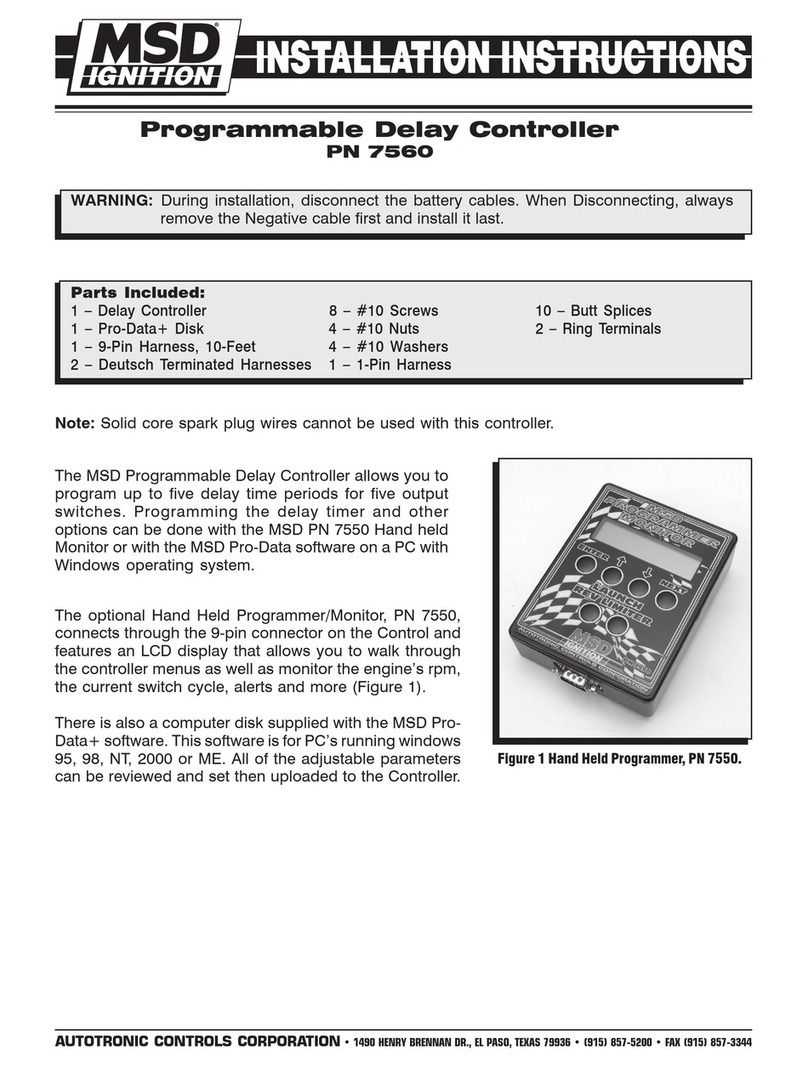
MSD
MSD 7560 installation instructions

AUMA
AUMA PROFOX PF-M25 Operation instructions
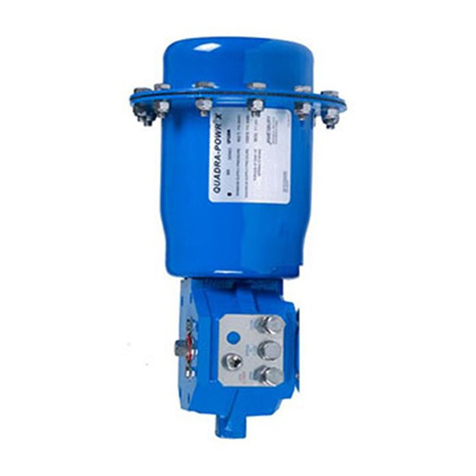
Metso
Metso Quadra-Powr X Installation maintenance and operating instructions
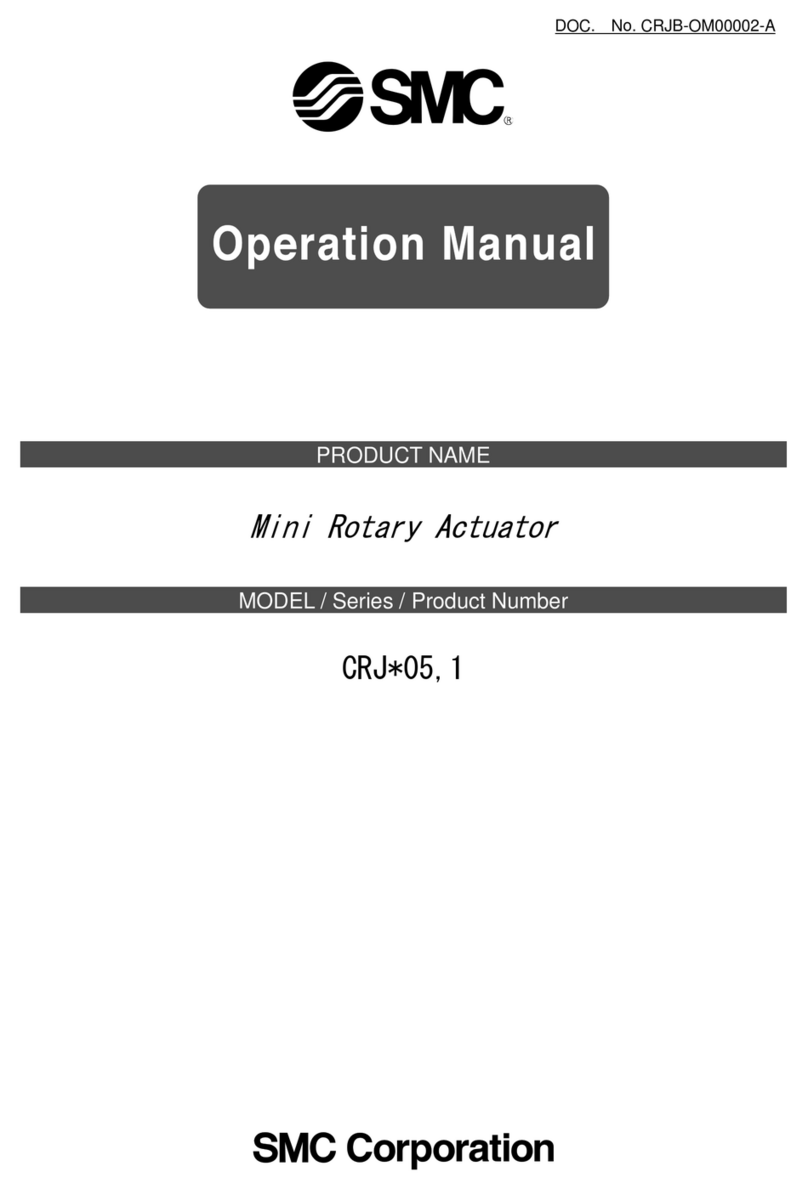
SMC Networks
SMC Networks CRJ Series Operation manual
